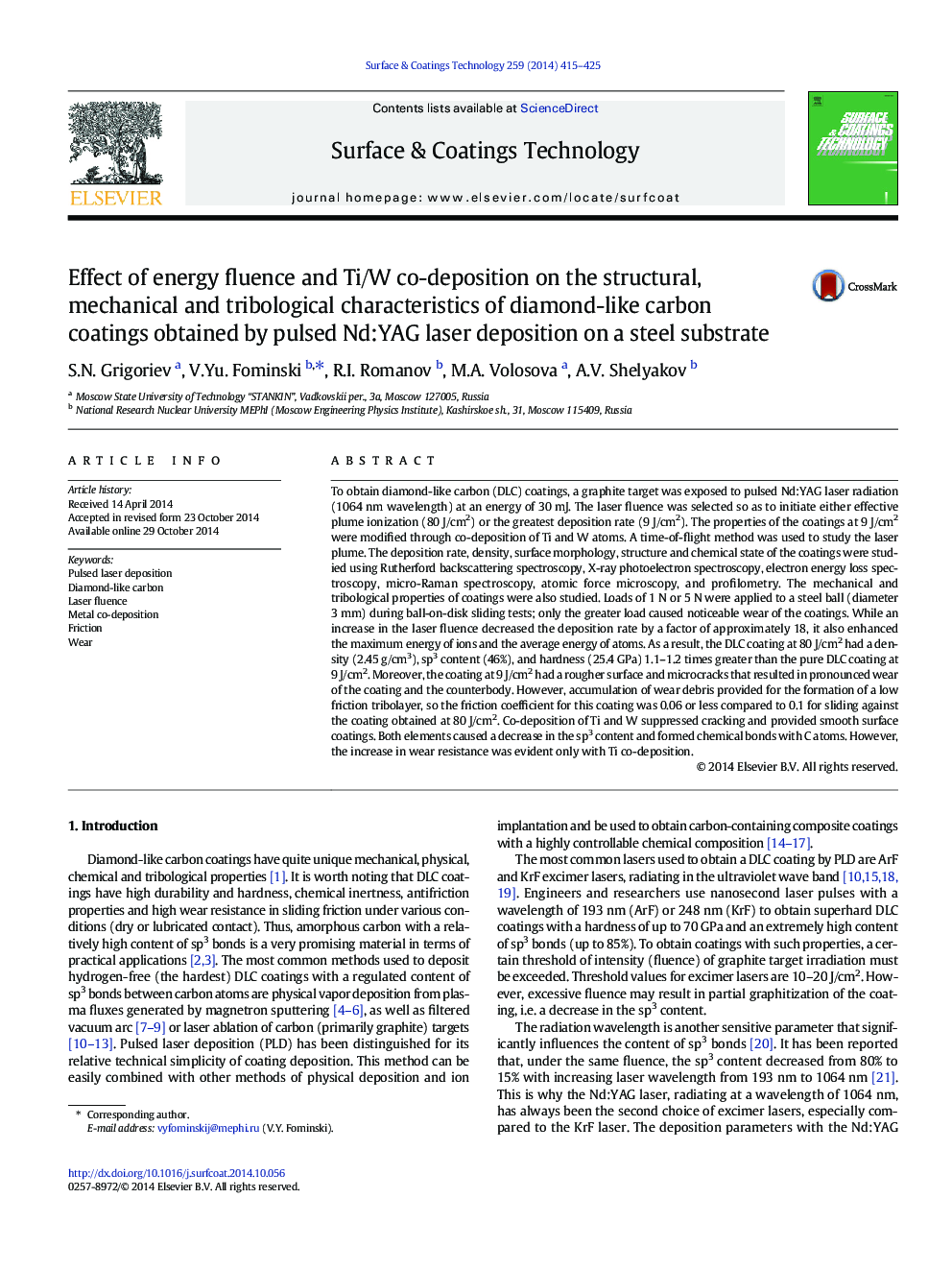| کد مقاله | کد نشریه | سال انتشار | مقاله انگلیسی | نسخه تمام متن |
|---|---|---|---|---|
| 10668022 | 1008284 | 2014 | 11 صفحه PDF | دانلود رایگان |
عنوان انگلیسی مقاله ISI
Effect of energy fluence and Ti/W co-deposition on the structural, mechanical and tribological characteristics of diamond-like carbon coatings obtained by pulsed Nd:YAG laser deposition on a steel substrate
دانلود مقاله + سفارش ترجمه
دانلود مقاله ISI انگلیسی
رایگان برای ایرانیان
کلمات کلیدی
موضوعات مرتبط
مهندسی و علوم پایه
مهندسی مواد
فناوری نانو (نانو تکنولوژی)
پیش نمایش صفحه اول مقاله

چکیده انگلیسی
To obtain diamond-like carbon (DLC) coatings, a graphite target was exposed to pulsed Nd:YAG laser radiation (1064Â nm wavelength) at an energy of 30Â mJ. The laser fluence was selected so as to initiate either effective plume ionization (80Â J/cm2) or the greatest deposition rate (9Â J/cm2). The properties of the coatings at 9Â J/cm2 were modified through co-deposition of Ti and W atoms. A time-of-flight method was used to study the laser plume. The deposition rate, density, surface morphology, structure and chemical state of the coatings were studied using Rutherford backscattering spectroscopy, X-ray photoelectron spectroscopy, electron energy loss spectroscopy, micro-Raman spectroscopy, atomic force microscopy, and profilometry. The mechanical and tribological properties of coatings were also studied. Loads of 1Â N or 5Â N were applied to a steel ball (diameter 3Â mm) during ball-on-disk sliding tests; only the greater load caused noticeable wear of the coatings. While an increase in the laser fluence decreased the deposition rate by a factor of approximately 18, it also enhanced the maximum energy of ions and the average energy of atoms. As a result, the DLC coating at 80Â J/cm2 had a density (2.45Â g/cm3), sp3 content (46%), and hardness (25.4Â GPa) 1.1-1.2 times greater than the pure DLC coating at 9Â J/cm2. Moreover, the coating at 9Â J/cm2 had a rougher surface and microcracks that resulted in pronounced wear of the coating and the counterbody. However, accumulation of wear debris provided for the formation of a low friction tribolayer, so the friction coefficient for this coating was 0.06 or less compared to 0.1 for sliding against the coating obtained at 80Â J/cm2. Co-deposition of Ti and W suppressed cracking and provided smooth surface coatings. Both elements caused a decrease in the sp3 content and formed chemical bonds with C atoms. However, the increase in wear resistance was evident only with Ti co-deposition.
ناشر
Database: Elsevier - ScienceDirect (ساینس دایرکت)
Journal: Surface and Coatings Technology - Volume 259, Part C, 25 November 2014, Pages 415-425
Journal: Surface and Coatings Technology - Volume 259, Part C, 25 November 2014, Pages 415-425
نویسندگان
S.N. Grigoriev, V.Yu. Fominski, R.I. Romanov, M.A. Volosova, A.V. Shelyakov,